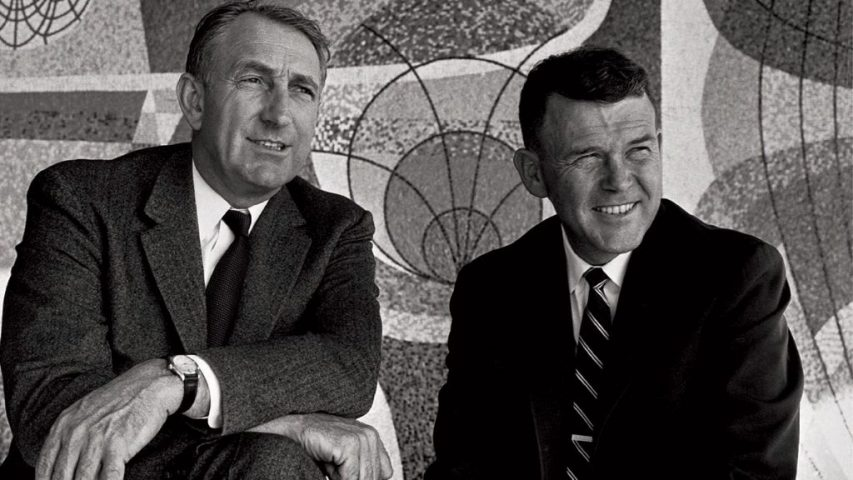Learning about the brands we work with.
In 1934, two Stanford electrical engineering graduates met on a camping trip. That was the beginning of what we like to refer to as Bill and Dave’s excellent adventures. The two men quickly became friends and decided to collaborate. They rented a property in Palo Alto, CA, in 1938, with Bill and his wife living in the house, and Dave taking the shed out back (cozy!). Meanwhile, the two men got to work on their electronic inventions in the garage with just $538 in capital (~$10,000 in today’s money).
It doesn’t necessarily sound like an auspicious beginning…so would you be surprised if we told you that Bill and Dave actually sported the last names of Hewlett and Packard, respectively, and were founding one of the most influential tech companies in the world?
Here’s How It Went
Bill and Dave started by inventing an audio oscillator for testing sound equipment. This maybe wouldn’t have been a big deal, except that a teeny-tiny company called Disney (ever heard of them?) called up to order eight of the machines for getting theaters ready to play Fantasia.
This break allowed the two men to enter a formal partnership in 1939 and move out the following year into rented buildings. The young company worked on providing benefits for its employees, such as bonuses and health care. Things developed slowly, however, since Bill went to serve in the Army during World War II.
After the War
In 1947, Bill and Dave incorporated the business. They had entered the field of microwave technology, oscilloscopes, and high-speed frequency counters. The company continued to develop innovative ways to decentralize decision-making and empower individual divisions in the company as self-sustaining organizations. In 1957, the company went public, with all employees receiving HP stocks.
The following year, HP acquired a graphic recording company, which became the basis of its forays into the world of printers. The company went international and by 1962 made the Fortune 500 list. In 1963, they developed a frequency synthesizer to be used in deep-space vehicles. Atomic clocks, LEDs, and spectrum analyzers soon followed.
The First Computers
In 1966, the sheer necessity of keeping up with their own family of programmable test and measurement devices prompted HP to develop a computer as a versatile instrument controller. It was the first ‘plug-and-play’ device on the new computer market, since it was designed to interface easily with a wide array of customers’ laboratory instruments.
Two years later, they released the world’s first ‘personal computer,’ which stored programs on a magnetic card and could solve science and engineering problems ten times faster than most other machines. This milestone was followed by breakthroughs in the world of business computing, calculators, and even a digital wrist instrument in 1977 (sorry, Apple, looks like HP beat you to that idea!).
A Legacy of Innovation
From the early 80s onward, HP has been capitalizing on its legacy of innovation to develop personal computers, handheld devices, ink and laser printers, laptops, and finally rack-mounted servers (and, would you believe it, all before 1993). With this kind of history of innovation and reliability, you can imagine why we at ComputerCare felt motivated to become an authorized service provider for all HP business model computers.



